SPHERE

| next surface | previous surface | 2D curves | 3D curves | surfaces | fractals | polyhedra |
SPHERE

| From the Greek sphaira: sphere. |
| Cartesian equation: Spherical equation: r = R. Cartesian parametrizations: |
|
| 1) |
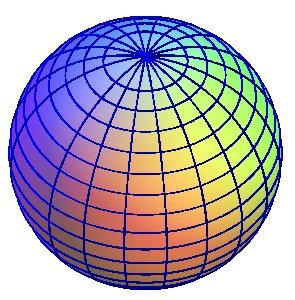 |
| 2) Mercator coordinates, change sin
v into th v in 1): the curves v = k u are the rhumb lines of the sphere. |
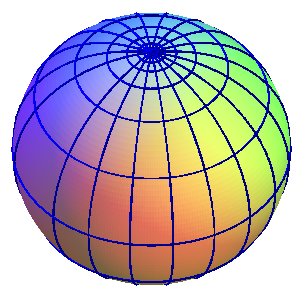 |
| 3) Stereographic coordinates from the South pole: The coordinate lines are the sections of the sphere by the planes passing by the lines x = 0, z
= -R and y= 0, z = -R.
|
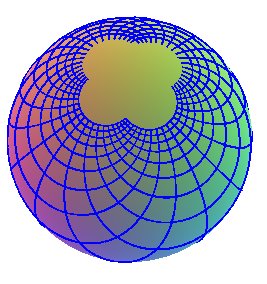 |
| 4) |
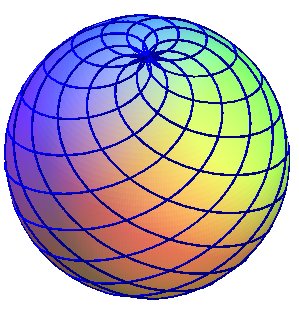 |
| 5) |
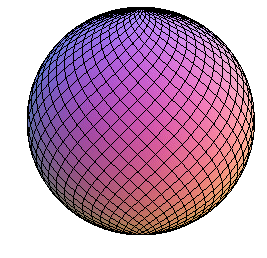 |
| 5) has the characteristic of being a "dressing" (E = G = 1) of the northern hemisphere minus the equator and the pole; however, an "isometry" is impossible (E = G = 1 and F = 0). The coordinate lines are studied here. |
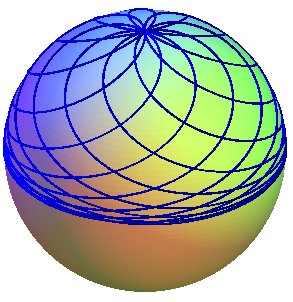 |
| The spherical parametrization: The piece of fabric that dresses this sphere is, before deformation, a square with area |
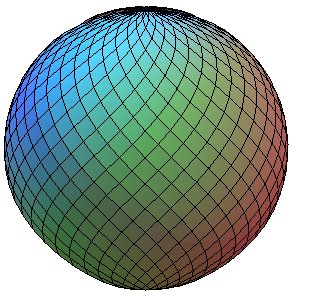 |
|
First fundamental quadratic form: Surface element: Second fundamental quadratic form: Principal radii of curvature: R and R. Area: |
The sphere with center O and radius R is the locus of the points of space located at distance R from O.
It is therefore the surface generated by the revolution of a circle around its diameter, which is a limit case of torus.
NSC: surface all the points of which are umbilics.
The sphere is a surface homeomorphic to the Alexandroff compactification of the plane , written
. In other words, the sphere minus one point is topologically equivalent to the plane.
See here the problem of the 13th sphere.
See also the ellipsoid, image of the sphere by an affine transformation.
| next surface | previous surface | 2D curves | 3D curves | surfaces | fractals | polyhedra |
© Robert FERRÉOL 2017